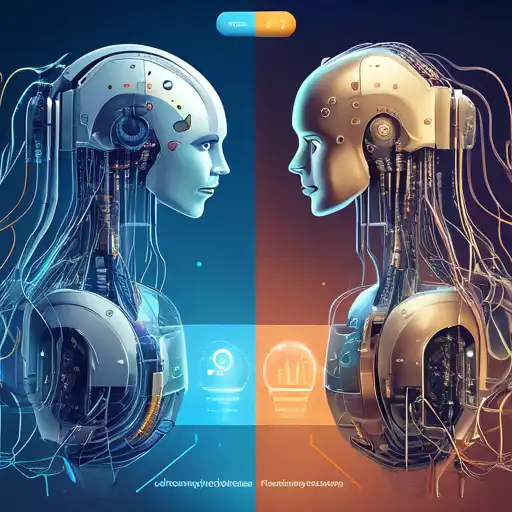Introduction to Machine Learning and Deep Learning
In the rapidly evolving field of artificial intelligence (AI), Machine Learning (ML) and Deep Learning (DL) stand out as two of the most significant and talked-about technologies. While they are often used interchangeably, there are key differences that set them apart. This article delves into these differences, helping you understand which technology might be best suited for your projects.
What is Machine Learning?
Machine Learning is a subset of AI that enables systems to learn from data, identify patterns, and make decisions with minimal human intervention. ML algorithms are trained using large sets of data, and they improve their accuracy over time without being explicitly programmed to do so.
What is Deep Learning?
Deep Learning, a subset of Machine Learning, mimics the workings of the human brain in processing data for use in detecting objects, recognizing speech, translating languages, and making decisions. DL algorithms use a layered structure of algorithms called an artificial neural network.
Key Differences Between Machine Learning and Deep Learning
Understanding the differences between ML and DL is crucial for selecting the right approach for your AI projects. Below are some of the key distinctions:
- Data Dependency: Deep Learning requires large amounts of data to perform well, whereas Machine Learning can work with smaller datasets.
- Hardware Requirements: DL algorithms are computationally intensive and often require powerful GPUs, unlike ML algorithms that can run on lower-end machines.
- Feature Engineering: In ML, features need to be identified and created by experts, whereas DL algorithms can automatically detect the features to be used for classification.
- Interpretability: ML models are easier to interpret and understand, making them preferable for applications where explainability is important. DL models, on the other hand, are often seen as black boxes.
Applications of Machine Learning and Deep Learning
Both ML and DL have a wide range of applications across various industries. Machine Learning is widely used in spam detection, recommendation systems, and fraud detection. Deep Learning, with its ability to process and analyze large volumes of unstructured data, is revolutionizing fields such as autonomous vehicles, voice-activated assistants, and medical diagnostics.
Choosing Between Machine Learning and Deep Learning
Deciding whether to use ML or DL depends on several factors, including the size of your dataset, the computational resources at your disposal, and the complexity of the problem you're trying to solve. For projects with limited data or resources, ML might be the more practical choice. However, for tasks that involve complex patterns and large datasets, DL could offer superior performance.
For more insights into AI technologies, check out our articles on Artificial Intelligence and Data Science.
Conclusion
While Machine Learning and Deep Learning are closely related, they serve different purposes and are suited to different types of problems. By understanding their key differences, you can make informed decisions about which technology to leverage for your specific needs. As AI continues to advance, staying informed about these technologies will be crucial for anyone looking to stay ahead in the field.
